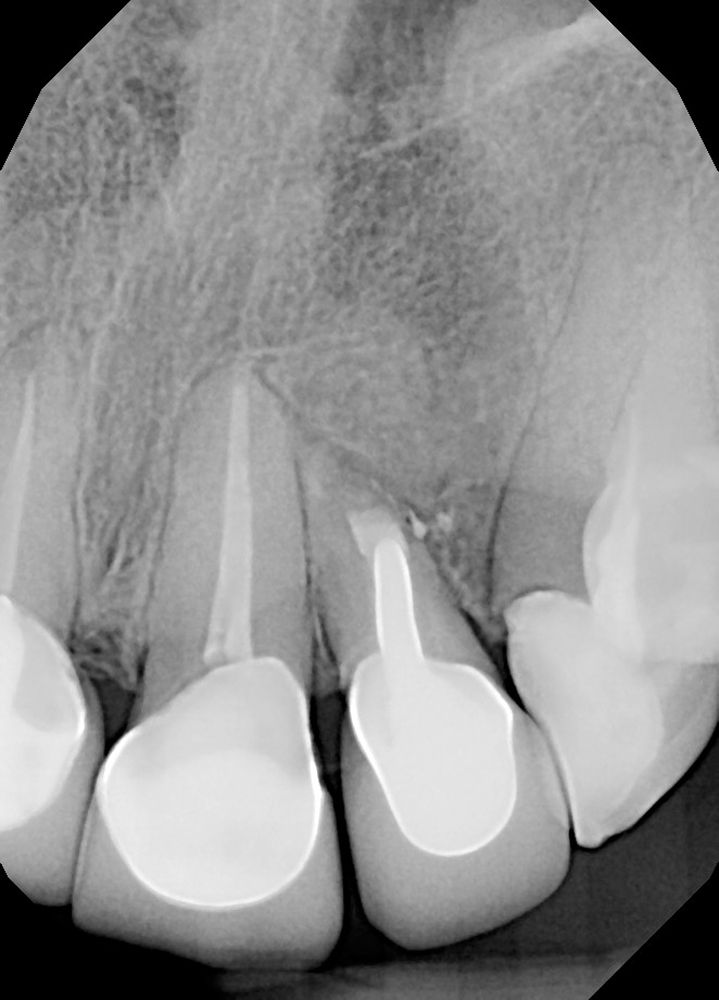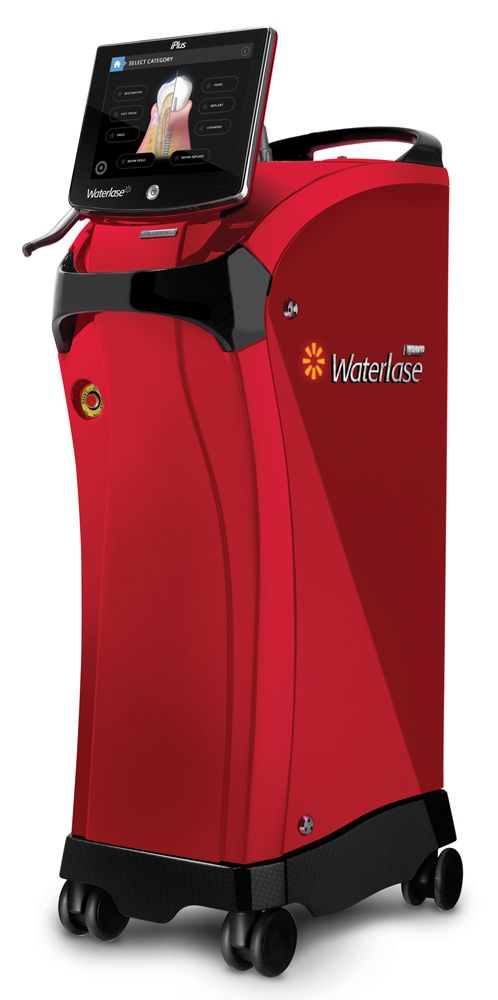One of the most feared dental procedures—the root canal—is often associated with throbbing pain, multiple dental visits and a hefty amount of time in the procedure chair. Root canal treatment removes the infected pulp from within a damaged tooth and its roots, followed by a thorough disinfection to discourage bacterial regrowth. With more than 15 million root canals performed annually, according to the American Association of Endodontists,1 this often-dreaded treatment is overdue for improvement. As innovative technology and new tools such as dental lasers take over, more treatment options lead to enhanced precision, faster procedure times, quicker healing, reduced need for drills and anesthesia, and more.
A Better Way
During a root canal treatment with conventional tools, such as burs, barbed broaches, files, and drills, it can be difficult to reach the base of the tooth with enough force to disrupt the pulp and remove the debris nestled at the bottom of the root. This portion of the tooth contains blood vessels and nerve fibers that keep the tooth alive, making it a highly sensitive area, but the most important to reach.
Historically, the concern with traditional root canal treatment methods surrounds syringe irrigation. Although syringes come in very small sizes, it can still be difficult for the sodium hypochlorite solution in the syringe to travel through the small needle down to the apical end of the tooth. If the irrigating solution does not reach down there effectively, either because of lack of turbulence or volume of the fluid, it makes it difficult to disinfect the apical end of the tooth. Ultrasonic units create some cavitation, but the level of efficiency and cavitation effect from dental lasers surpasses any new tool on the market.
Thanks to dental laser technology, dentists and their staff are now able to target bacteria and infected dentin on the tooth with greater accuracy, helping to preserve more of the healthy tooth structure. With dental lasers, the same treatment can be achieved in less time, with enhanced precision to remove the pulpal tissue and its remnants while decreasing the unnecessary removal of healthy tooth structure.
At my practice, a Waterlase iPlus dental laser by BIOLASE is used for the cleaning and shaping of root canals, and for laser-assisted root canal disinfection following final instrumentation of the canals. Upon opening the tooth surface to access the root canal, the dental laser uses a combination of air/water spray and laser energy to remove the diseased tissue, and enhance cleaning and shaping of the canals while using files. The clinician then can place a root filling. Waterlase laser energy has been shown to have an antibacterial effect in root canals, reducing Enterococcus faecalis by 99.7%, according to data on the BIOLASE website.2
For me, the Waterlase disrupts bacteria, biofilms, and debris more efficiently than conventional tools, resulting in faster and more effective treatments. At the same time, the enhanced disinfection achieved from activating irrigating solutions within the canal system gives the provider and dental assistant superior ability to clean the root canal system. Although success and survival of root canal treatments can range between 85% to 95%, disinfection is key, and the enhanced precision from dental lasers reduces the chance a patient will need to undergo a retreatment, apical surgery, or extraction.
Some patients experience moderate to severe pain after root canal treatments, and in some cases, mild pain lasts 6 months or longer following treatment. However, with modern tools such as lasers, the amount of postoperative pain is largely reduced and even eliminated. Dental lasers enhance treatment by homing in on the infected area with efficiency and power that conventional tools lack, and in some cases decreasing the reliance on drills and local anesthesia.
Dental lasers offer faster procedure times, quicker healing, and improved accuracy. Healing happens so quickly that it often surprises patients and care teams. In one case, a patient came in for a 6-month follow-up appointment after having completed an apicoectomy of her anterior left incisor (#10). A unique side firing tip also made by BIOLASE was used to direct laser energy at 90° right onto the infected root end surface. Complete apical healing was present on a tooth that I originally wasn’t sure could be
saved. So not only does the Waterlase provide enhanced irrigation to assist with root canal treatment, but apical surgery is also improved. Additionally, the efficiency of the laser and decreased treatment time enable providers to see more patients per day, as well as increase the likelihood that patients will return for more root canal treatments when needed, thanks to the better-than-expected dental experience.
Waterlase iPlus
Described as the most advanced all-tissue laser, this minimally invasive dental laser system features expanded and enhanced capabilities such as REPAIR protocols to give your patients the best possible experience, and provide you with an opportunity for practice growth. Waterlase features up to 10W of power, dozens of procedural presets, and an easy-to-use interface to simplify the operation of this versatile clinical tool.
BIOLASE
833-246-5273
BIOLASE.com
A Vital Tool in My Practice
Dental lasers are a viable, powerful tool to assist in performing root canal treatments. Since adopting dental lasers, my practice now utilizes the innovative technology for every root canal procedure. Additionally, we tap the new technology to advance treatment for other hard tissue and soft tissue treatments as noted in the case just mentioned. Thanks to dental lasers, my practice is now able to see on average 1 additional patient per day. Almost all treatments have shifted from the traditional 2 or multiple visits to a single visit. From increased accuracy and safety during treatment, to improved recovery and decreased sensitivity post procedure, dental lasers have revolutionized my practice and enhanced patient and provider relationships. With less mechanical instrumentation, patients have quicker healing times, decreased mental stress from the improved procedure, less time in the chair, and overall better results. The benefits of dental lasers are unparalleled in their precise and reliable care. Every dental practice committed to advancing treatment and care should look into investing in dental laser technology for their patients and care teams.
References
1. Root Canal Safety. American Academy of Endodontists. Accessed November 2, 2022. https://www.aae.org/specialty/clinical-resources/root-canal-safety/
2. Rapid Endo, Radial APical Irrigation & Disinfection. BIOLASE. Accessed November. 2, 2022. https://www.biolase.com/media/21-1912_RAPIDEndo-Protocol-Guide_ r3.pdf



